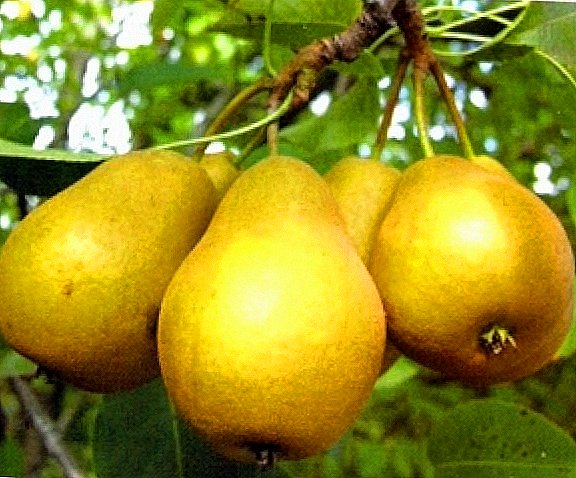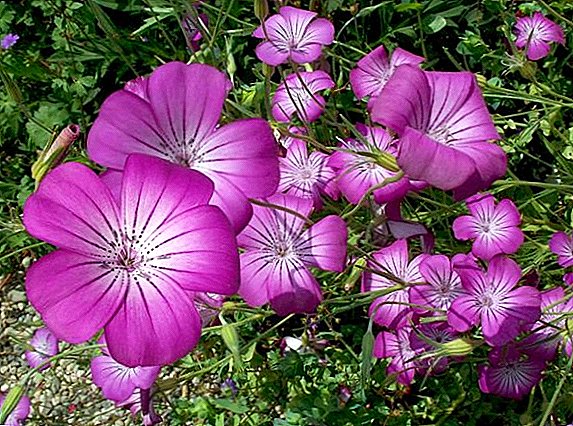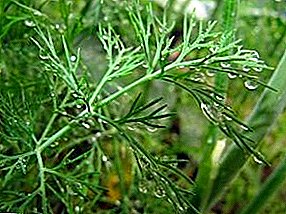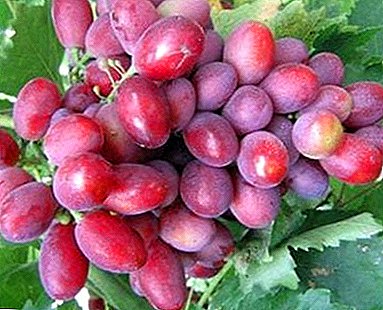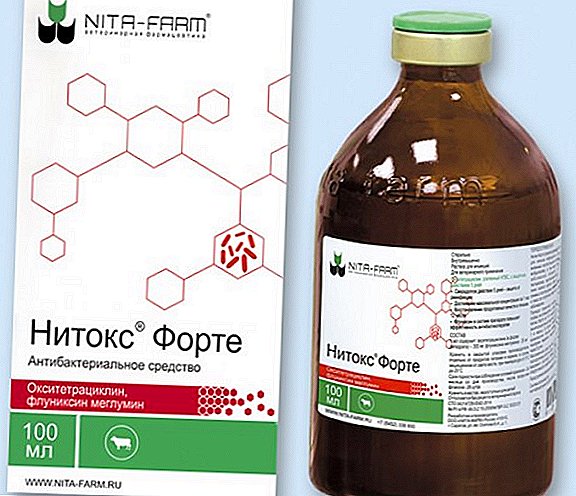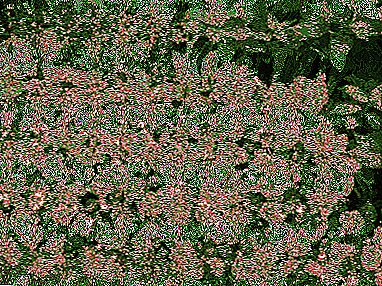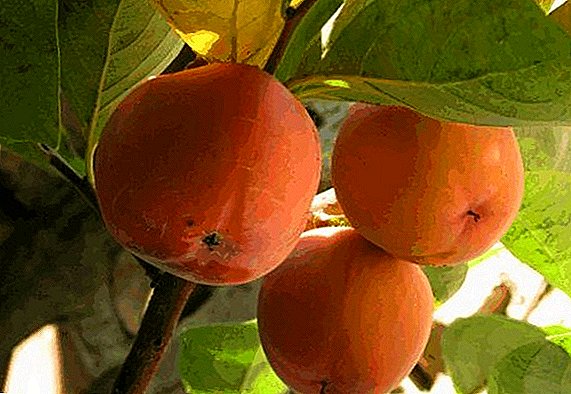
Radish 18 days - a popular variety of this root, which allows in the shortest possible time to get juicy fruits to the spring table.
From sowing to full ripening takes no more than 3 weeks, which allows especially experienced radish lovers to carry out 2-4 plantings of this vegetable per season.
Today we will understand what is remarkable for the variety of radish for 18 days, what are its advantages and disadvantages. We learn where and for what is used and how to grow and care for radishes.
The article also looks at what diseases and pests can harm the radish.
Characteristics and description of the variety
- Appearance. The color of the root varies from pinkish red to bright red with a white tip. Form - oval-cylindrical. The length of the root reaches 8 cm.
- Sowing time. On one plot of land for the spring-summer season you can get up to 4 harvests of this root. The first sowing is carried out as soon as the snow melts. Subsequent - with an interval of at least 2 weeks. The last sowing is made in the middle of August.
- The average weight of 1 radish. Fruit weight is 20-25 g.
- What is the yield of 1 ha. Depending on the quality of the soil, the timeliness of irrigation and the density of sowing from 1 hectare, a gardener will collect from 2 to 3 tons of this vegetable.
- Where it is recommended to grow. The seed producer advises growing crops in the open field. When first planting, in March, it is recommended to cover the crops with plastic wrap before germination.
- Resistance to diseases and pests. Variety resistant to tsvetushnosti. In case of excessive watering, acidification of the soil and irregular weeding of radish beds, diseases affect:
- radish mosaic;
- powdery mildew;
- black and gray rot;
- blackleg;
- white rust.
It is also necessary to protect the crop from pests.
Important! To prevent the occurrence of bacterial and viral diseases of radish for 18 days, it is necessary to sow the seed before seeding.
- Maturation term. From the appearance of the first shoots to ripening root takes 16-20 days.
- What kind of soil prefers. Radish 18 days feels good in fertile soils, light loamy or sandy. Also, for a rich harvest requires an open area and a sufficient amount of light, otherwise instead of large root crops will grow lush tops. Sour and poor soils are not suitable for planting this root - in such a soil it will not give a good harvest.
Experienced vegetable growers recommend regularly loosening and irrigating the soil in which this variety of radish is grown to obtain a rich harvest. Also, before sowing, it is necessary to fertilize the soil.
- The yield of harvest. Radish 18 days is characterized by good keeping quality. Root crops grown from mid-August to late September are suitable for winter storage.
In the video we will clearly see how this variety of radish looks like:
A photo
Here you can see a photo of a vegetable.




Breeding history
It is believed that radish originated from radish and was bred about 5 thousand years ago., but actively grown in European countries only from the middle of the XVI century. In the XIX century, Russian breeders created many new varieties of radish, including early ripening. Since that time, a huge number of early varieties of this root have been bred, among which the radish takes 18 days.
Difference from other types
- Radish 18 days is characterized by the complete absence of arrows.
- Experienced gardeners claim that this variety is ideal for growing not only in the open field, but also in the greenhouse, and on the windowsill.
- Seeds give the most friendly shoots.
- The root crop ripens in the shortest possible time, the first fruits can be tasted as early as 16 days after germination.
Advantages and disadvantages
The virtues of radish 18 days:
- friendly shoots;
- quick ripening of fruits;
- resistance to cold;
- the ability to grow several harvests per season;
- large fruits;
- lack of arrows;
- juicy fruits, pleasant taste without bitterness;
- Good price and availability of seeds in stores.
Disadvantages:
- possible presence of voids in the volume of the root;
- high demands on the quality of the soil, lighting and watering.
What and where is it used for?
Radish 18 days - one of the most popular varieties among summer residents across the country. This variety is sown mainly on private land plots and is used only as a food product.
Features
Growing up
Radish is characterized by the possibility of growing crops in the open field, and at home on the balcony or windowsill. The variety also feels good in greenhouses. Seeds are placed in the ground at a depth of 1-1.5 cm. The distance between the seeds is 2-3 cm, between rows - 10-13 cm.
Important! It is necessary to ensure that representatives of the cruciferous family (cabbage, radish, arugula, radish) did not become the predecessors of this crop in the garden. Otherwise, the root crop will not receive the necessary nutrients from the soil and will not give a good harvest.
Harvesting and Storage
Crop harvested as fruits ripen. The first fruits are ready to eat on the 16th day since the first shoots appeared.
Early ripe varieties are not subject to long-term storage in the refrigerator. Radish 18 days stored in the refrigerator for no more than 2 weeks. Under cellar conditions at a temperature of about 5 ° C, the root vegetable retains its taste and nutritional properties for 2-3 months.
Diseases and pests
The variety is not sensitive to the length of daylight, therefore it is not afraid of color blooming and other diseases. The crop is being attacked:
- cruciferous flea;
- cabbage fly;
- wireworm;
- rapeseed bug;
- slugs
Pests affect mainly tops.
Prevention of various problems
 To prevent attacks on the crop of insect pests, tops of root vegetables are sprinkled with ashes. and planted next to the crop radish, pest repellent:
To prevent attacks on the crop of insect pests, tops of root vegetables are sprinkled with ashes. and planted next to the crop radish, pest repellent:
- marigold;
- dill;
- coriander;
- calendula;
- lavender;
- garlic.
Regular weeding and loosening the soil are also effective in controlling pests.. Shoots protect from pests by covering the beds with non-woven material. In order to avoid the drying of the tops on hot sunny days, it is necessary to provide a small shade to the crop.
Similar types of radishes
Breeders brought a lot of radish species. Not surprisingly, many of them are very similar to each other. 18 days are like radishes:
- By maturation rate:
- Randar;
- F1 Firstborn;
- Children's F1;
- Presto;
- Ultra early;
- Heat;
- Dawn
- In appearance:
- French breakfast;
- Sweet tooth;
- Vnuchkina joy;
- Openwork F1;
- Selyanka.
- By taste:
- Albina;
- Virovsky white;
- Heat;
- Dawn;
- Ilke;
- Red Giant;
- Quart;
- Alyoshka
Radish 18 days - a juicy root crop, the harvest of which can be harvested up to 4 times per season. These advantages and due to its wide popularity in the circles of summer residents and gardeners. There is not a single vegetable grower who is not attracted by the rate of ripening of these fruits. and their unique taste. The main thing is to water the shoots in time in dry weather, and a generous harvest of red root crops is provided for the whole summer.


